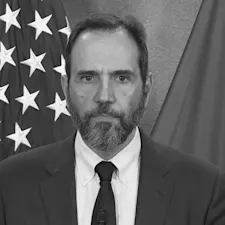
ICE Detainees Face Tuberculosis Crisis
Tuberculosis is silently stalking America's immigration detention centers, turning what should be temporary holding into a breeding ground for a deadly disease. This summer, detainees transferred between facilities in Anchorage, Alaska, and Tacoma, Washington, reportedly faced suspected tuberculosis exposure, isolation, and medical neglect. The human cost is mounting as those trapped in overcrowded, unsanitary conditions confront not only illness but also the fear of being cut off from loved ones without clear answers or adequate care.
A Hidden Epidemic in Plain Sight
Imagine being confined in a crowded cell, surrounded by strangers, with little access to fresh air or proper medical attention. Now add the threat of tuberculosis, a disease that spreads through the air when an infected person coughs or sneezes, requiring months of treatment to cure. This is the grim reality for detainees at the Northwest ICE Processing Center in Tacoma, where seven potential tuberculosis cases have been reported recently, according to state health officials, as reported by KUOW.
U.S. Immigration and Customs Enforcement (ICE) disputes that active tuberculosis is present at the facility, attributing the reports to one detainee who refused testing and six others who were exposed to that individual, according to KUOW. Yet, attorneys representing detainees tell a different story. One client was hospitalized and treated for tuberculosis after being transferred back to Tacoma from Anchorage, where conditions have been described as "very poor," with inadequate medical care and overcrowding, as reported by the World Socialist Web Site.
Transfers That Spread Fear and Disease
The outbreak traces back to a series of transfers between the two facilities. In June, about 40 detainees were reportedly moved from Tacoma to Anchorage, only to be returned to Washington state weeks later. Upon their return, ICE informed them they had been exposed to tuberculosis during their time in Alaska, as reported by the World Socialist Web Site. According to KUOW, one detainee's attorney, Sean Quirk of the law firm Kellogg, Hansen, Todd, Figel & Frederick, had to call local hospitals to locate his client after missed appointments, only to discover he was undergoing a rigorous six-month tuberculosis treatment regimen known as RIPE, involving multiple antibiotics.
This back-and-forth movement of detainees between facilities with substandard conditions has not only heightened the risk of disease transmission but also deepened the detainees' sense of uncertainty and abandonment. Being shuffled like cargo, often without clear communication or transparency, leaves detainees isolated from their families and legal advocates, compounding the psychological toll of detention.
Overcrowding and Neglect: A Perfect Storm for Tuberculosis
Tuberculosis thrives in environments marked by overcrowding, poor sanitation, and inadequate health protocols — conditions reported at many ICE detention centers. Medical experts warn that these conditions mirror those that fueled tuberculosis outbreaks in prisons worldwide, where rates of infection can be many times higher than in the general population.
Sources say that detainees in ICE custody who show signs of tuberculosis should be placed in specialized negative-pressure isolation rooms, which prevent airborne spread. However, many detention centers lack such facilities. Instead, detainees with infectious diseases are often put in solitary confinement—labeled "segregation" by ICE — despite the fact that these cells do not meet medical standards for containing infectious diseases, according to Prospect.
Unannounced inspections at other detention centers have revealed shocking lapses, including unclean isolation rooms with soaked toilet paper stuck to ceilings and graffiti-covered walls, increasing the risk of disease spread among detainees and staff alike.
The Human Toll: Fear, Isolation, and Disappearance
Beyond the physical dangers, detainees face a cruel psychological ordeal. The lack of transparency about their health status and whereabouts leaves families and lawyers in the dark. Attorney Sean Quirk, described how his client was effectively kept out of contact for over a week after being transferred, with no information provided by ICE about his condition or location, saying, "The U.S. government effectively disappeared my client for over a week," according to the World Socialist Web Site.
This enforced silence and isolation exacerbate the trauma of detention. Detainees live in fear not only of the disease but also of being cut off from the outside world, denied timely medical care, and left to navigate a bureaucratic maze that often seems indifferent to their suffering.
A Systemic Failure Amid Political Priorities
The tuberculosis outbreak is not an isolated incident but a symptom of broader systemic neglect. Despite receiving a massive $45 billion appropriation, ICE's spending on detainee healthcare appears insufficient to address these urgent needs. Dr. Katherine Peeler, medical adviser for Physicians for Human Rights, said "ICE just got an appropriation of $45 billion, but if I had to predict, the line item for health care is not the thing that’s going to be increased," as reported by Prospect.
Medical experts and advocates argue that the government's focus on expanding detention capacity and enforcing mass deportations under the current administration has come at the expense of detainee health and safety. Facilities like the newly constructed "Alligator Alcatraz" in Florida, a name coined by Human Rights Watch to describe the harsh, punitive environments detainees endure, exemplify these conditions, as reported by the World Socialist Web Site.
The overcrowding and unsanitary conditions, combined with inadequate medical staffing and delayed screenings, create a perfect storm for tuberculosis and other infectious diseases to spread unchecked. The consequences extend beyond detention walls, as released detainees with active or latent tuberculosis risk transmitting the disease to the broader community.
Calls for Transparency and Reform
State lawmakers in Washington have reportedly passed new legislation aimed at increasing oversight of the Tacoma facility, including granting the Department of Health authority to inspect medical care and sanitation standards. However, the detention center has resisted allowing state inspectors inside, leading to ongoing legal battles.
Advocates and medical professionals urge immediate action to improve screening, isolation, and treatment protocols, and to reduce overcrowding. They emphasize that protecting detainees' health is not only a moral imperative but also a public health necessity.
Disclaimer: Many of the accounts in this article come from detainees, attorneys, and outside observers and have not all been independently verified. ICE disputes claims of widespread medical neglect, denies that there are confirmed active tuberculosis cases at Tacoma, and maintains that its facilities follow federal health and safety standards.
References: Tuberculosis Spawning in Crowded, Dirty ICE Detention Centers | KUOW - Suspected tuberculosis cases reported at Tacoma immigrant detention center | Tuberculosis threatens immigrants at Tacoma ICE detention center - World Socialist Web Site | Suspected tuberculosis cases reported at Tacoma immigrant detention center






















